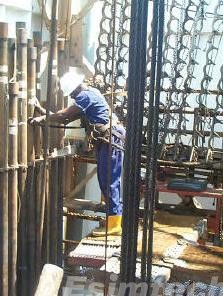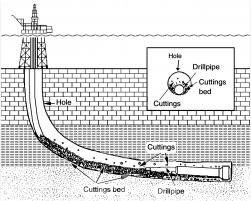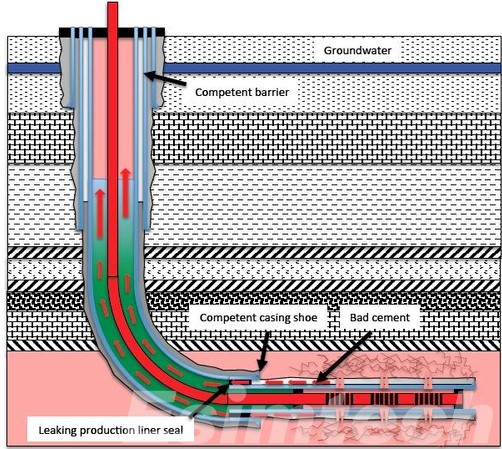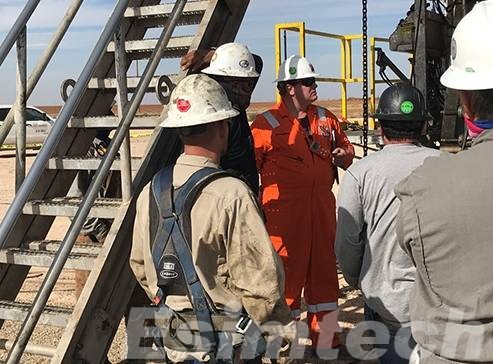Tripping in Drilling: A Guide to Preventing Wellbore Catastrophes
Drilling operations involve the controlled descent of a drill string deep underground. This process, while essential for oil and gas exploration, can be susceptible to setbacks known as “tripping.” Tripping incidents can significantly impact drilling efficiency and, in severe cases, lead to wellbore catastrophes. This guide explores the different types of tripping, common causes, and preventative measures to ensure a smooth and safe drilling operation.

Types of Tripping in Drilling
There are two primary categories of tripping in drilling, each demanding a different approach:
Planned Tripping
This refers to the scheduled withdrawal of the drill string from the wellbore for routine maintenance tasks. These planned events are factored into overall well construction planning and are essential for the success of the drilling operation. Here are some common examples of planned tripping:
- Changing Drill Bits: Drill bits wear down over time and need to be replaced periodically to maintain optimal drilling performance. Planned tripping allows for the removal of the dull bit and the installation of a fresh one.
- Adding Drill Pipe Sections: As the wellbore gets deeper, additional drill pipe sections must be added to the drill string to reach the target formation. Planned tripping facilitates the safe addition of these sections.
- Running Wellbore Logs: Wellbore logs are tools used to gather geological data about the formations being drilled through. Planned tripping allows for the lowering and retrieval of logging tools into the wellbore.
Unplanned Tripping
While planned tripping is a necessary part of drilling, unplanned tripping events are undesirable occurrences that can significantly disrupt the drilling schedule. Unplanned tripping can be caused by a variety of issues and can lead to lost time and increased costs. Here are some examples of unplanned tripping:
- Stuck Pipe: Formation instability, encountering unexpected features like cavings (chunks of rock falling from the wellbore wall), or wellbore collapse can cause the drill string to become lodged in the hole. Retrieving a stuck drill string can be a complex and time-consuming operation.
- Drill String Issues: Equipment failure downhole, such as a broken drill bit, a damaged drill pipe section, or coupling problems, can necessitate unplanned tripping to retrieve and replace the faulty component.
- Fishing Operations: In some cases, downhole tools or pieces of the drill string can become detached and fall to the bottom of the wellbore. Retrieving these lost items, known as “fishing,” requires unplanned tripping to pull the drill string out of the hole and facilitate the fishing operation.

Common Causes of Tripping Incidents
Several factors can contribute to unplanned tripping incidents. Here’s a closer look at some of the most common culprits:
1. Hole Problems
Maintaining a stable wellbore is crucial for smooth drilling. Several downhole challenges can lead to unplanned tripping:
- Formation Instability: Weak rock formations can crumble or cave in, causing the drill string to get stuck or encounter excessive friction.
- Unexpected Geological Features: Surprises like harder-than-anticipated rock layers or faults (fractures in the rock) can lead to drilling difficulties and unplanned tripping.
- Wellbore Collapse: In the worst-case scenario, the entire wellbore can collapse due to unstable formations, high pressure, or inadequate wellbore wall reinforcement. A wellbore collapse can completely trap the drill string downhole, requiring complex and expensive intervention procedures.
2. Drill String Issues
The drill string itself can be a source of unplanned tripping if malfunctions or failures occur:
- Equipment Failure: Drill bits can wear down prematurely, drill pipes can suffer from metal fatigue or corrosion, and downhole tools can malfunction, all necessitating retrieval of the drill string for repairs.
- Coupling Problems: Improperly made up couplings, or couplings damaged during drilling, can lead to leaks or even complete separation of the drill string downhole, both requiring unplanned tripping operations to rectify.
3. Operational Errors
Human error during drilling can also play a role in unplanned tripping:
- Improper Drilling Practices: Deviating from established procedures, such as applying excessive weight-on-bit or exceeding recommended drilling parameters, can put undue stress on the drill string and increase the risk of getting stuck.
- Inadequate Hole Cleaning: Drilling generates rock cuttings that need to be continuously removed from the wellbore. Insufficient hole cleaning can lead to a build-up of cuttings, which can impede the drill string’s progress and potentially cause sticking.
How to Prevent Tripping Incidents
Planning and Preparation are Key
Before any tripping operation begins, thorough planning is essential. This includes a detailed analysis of wellbore data to identify potential trouble zones. The right drill pipe size, weight, and connections need to be chosen based on the wellbore conditions and planned depth. Additionally, all equipment involved in tripping must be in top condition, and a clear tripping plan outlining each step, crew roles, and contingency plans needs to be established and communicated to the crew.
Safe Handling Practices Minimize Risk
Safe handling practices are crucial during tripping. Crew members must use proper racking procedures to avoid damaging the drill pipe or injuring themselves. Elevators need to be employed correctly for safe and efficient handling of drill pipe sections. Excessive force or swinging of drill pipe sections should be avoided, and proper tools and techniques for controlled handling should be used at all times. Maintaining even weight distribution throughout the drill string while tripping is also essential to prevent the drill pipe from getting stuck or deviating from the planned wellbore trajectory.
Maintaining Wellbore Integrity is Crucial

Continuous monitoring of drilling mud weight, pressure, and other wellbore parameters during tripping is vital for maintaining wellbore integrity. Early detection of changes can indicate potential issues like lost circulation and allow for prompt action. Additionally, maintaining detailed trip sheets that document every tripping operation, including the time taken, difficulties encountered, and corrective actions, helps identify trends and areas for improvement in future tripping procedures.
Advanced Technologies Offer Additional Support
The oil and gas industry is constantly innovating. Consider implementing automated tripping systems that can handle some tasks with minimal human intervention, reducing fatigue and the risk of human error. Additionally, real-time monitoring tools equipped with downhole sensors can provide valuable insights into wellbore conditions during tripping, allowing for proactive adjustments to avoid potential problems.
Crew Training and Communication are Paramount

Regular crew training on safe tripping procedures, including handling techniques, emergency protocols, and the use of any advanced tripping technologies, is essential. Clear communication protocols between crew members during tripping operations are also paramount. This ensures everyone is aware of the situation and can react quickly to any changes or issues.
By following these practices, oil and gas companies can significantly reduce the risk of tripping incidents. A focus on prevention, continuous improvement, and a strong safety culture are vital for safe and efficient well construction in the drilling industry.
Conclusion
Tripping is an inevitable part of drilling, but by understanding the different types, and common causes of incidents, and implementing preventative measures, drilling crews can significantly reduce the risk of wellbore catastrophes. Prioritizing wellbore stability, equipment maintenance, and crew training fosters a safe and efficient drilling operation.
